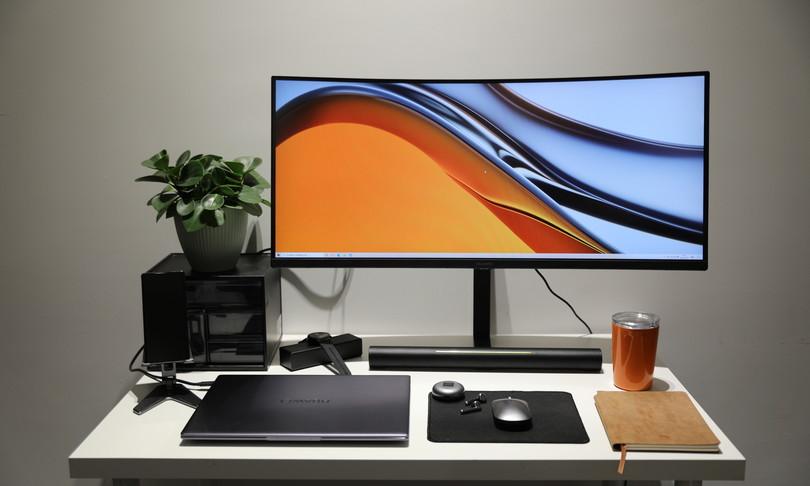It is the first mobile ecosystem to be born beyond the Duopoly Google-Apple.And now, with the launch of new devices and the Harmonyos 2 operating system, it is better understood how it will be: Huawei has chosen to be the missing ring between the two Americans.
An ecosystem planted in hardware, like Apple: with new smartphones, tablets and earphones, the screens also arrive and there is a change of pace in smartwatches.But a more open ecosystem than that of the apple, to dialogue with intelligent devices that are not homemade, such as ovens and refrigerators, and push the IOT.The internet of things, on the other hand, supports and is supported by the other great business of Chinese society, connectivity.Everything is held.
With the global launch, the track that Huawei gave on its path is thus outlined: 1 + 8 + n.A smartphone like the main HUB, eight classes of devices in close connection (from tablets to speakers to viewers) and an unknown number of services to be exploited even beyond the hardware marked by Shenzhen.
A liquid ecosystem
The bake of new products is not split from Harmonyos.As Andreas Zimmer, Head of Product Huawei CBG Europe pointed out, "The operating system is linked to hardware and the ecosystem is linked to the operating system".
These are therefore "native" devices, that is, created with the idea of working well with that software.In fact, this global launch, waiting to have Harmonyos (which will arrive in the coming months on a hundred devices), focuses very much "on multi-district interaction".Speaks of a digital environment as if it were a "cohesive and holistic super device".
The operating system has a control panel that allows you to manage and connect the devices with a simple drag.For example, if you want to watch a movie, just open the control panel and move the monitor icon to that of the phone: the film will pass from the phone to the TV.Same gestures if you want to switch from the audio of the smartphone to that of the earphones, the freebuds.

To confirm the integration is the "Multi-Device Task Center": in essence, it allows you to work the apps on different devices without being installed individually on each of them.
The door open to the IoT
As mentioned, the wide range of hardware and the push to exploit the advantages of the integration of a fluid ecosystem recall the Apple approach.Looking at the IoT, however, Huawei opens more similarly to the old partner (Google-Adroid).Not that Shenzhen want to create different versions of their operating system for other producers.But Harmonyos leaves an open ecosystem door, to let the IoT devices enter.Allows you to connect the smartphone with appliances of some brands (such as Midea and Haier).Just place the phone on the oven or connect it to the fridge to manage preparations and temperatures.
Compared to the last EMUI (the Huawei operating system based on Android), Harmonyos claims to have "improved the fluidity of the 42%system operations": a smartphone would therefore be able to maintain reading and writing speed similar to those ofA phone just purchased even after 36 months of use, even when the storage space is reduced.
Watch 3 between sport and health
Huawei remarked the concept of ecosystem also with a full -bodied launch of new devices.Watch 3 (also in Pro version) is the first smartwatch born with Harmonyos on board."It is a premium product, but we do one step at a time," said Zimmer.As if to say that there is no immediate goal of climbing over the leaders of the segment.
The watch supports up to 100 training modes, monitors the temperature, detects the falls (with automatic alarm), recalls the intake of drugs.In short: like other latest generation smartwatches, it moves from fitness and well -being to arrive at health and look at medicine.
From a stylistic point of view, the device is characterized by a round dial and a swivel crown, which becomes the main control tool.In addition to connectivity and integration with other products, Huawei highlighted the battery life compared to competitors: UL Watch 3 reaches 3 days in smart mode and 14 days in ultra long mode (i.e. with a pushed battery saving that limitssome features).The Watch 3 Pro (also characterized by materials of greater value than the younger brother) reaches 5 days in smart mode and 21 days in ultra long mode.
Earphones and tablets
Huawei has also launched the fourth version of the wireless earphones (the FreeBuds), the new Matepad tablet (also reversal pro) and the Mateviews, onset in the monitor field.The FreeBuds 4 have lightened the 20%charger box, they equipped themselves with a more advanced active noise cancellation technology and went from one to two microphones.
The Matepad tablet is also renewed.The Pro version is equipped with a 12.6 -inch OLED display, with a 90%screen/body ratio, the highest on the market.Equipped with the chipsets of the Kirin 9000 series (another Huawei homemade piece), the tablet is accompanied by the second generation of M-Pencil, with a platinum coated nib and 4.096 levels of strength.
The debut in the monitor sector
Last but not least, the two Mateview displays.Huawei begins in the stand-alone screens (i.e. independent of other devices).Independent but not divided, given that also in this case it goes on the concept of ecosystem (for example you can connect wireless with smartphones and PCs, acting on the control panel to "transfer" videos and other content).
"With the launch of the monitor of the Mate series, we do our entry into the Stand Alone monitor sector confirming our vocation to integration and seamless connection," commented Pier Giorgio Furcas, Deputy General Manager Huawei CBG Italia.Mateview is a more traditional aesthetic monitor, 28.2 inches with 3840 × 2560 resolution.The Mateview GT is instead a curved screen 21: 9 designed for video games: its 34 inches support a resolution of 3440x1440.
